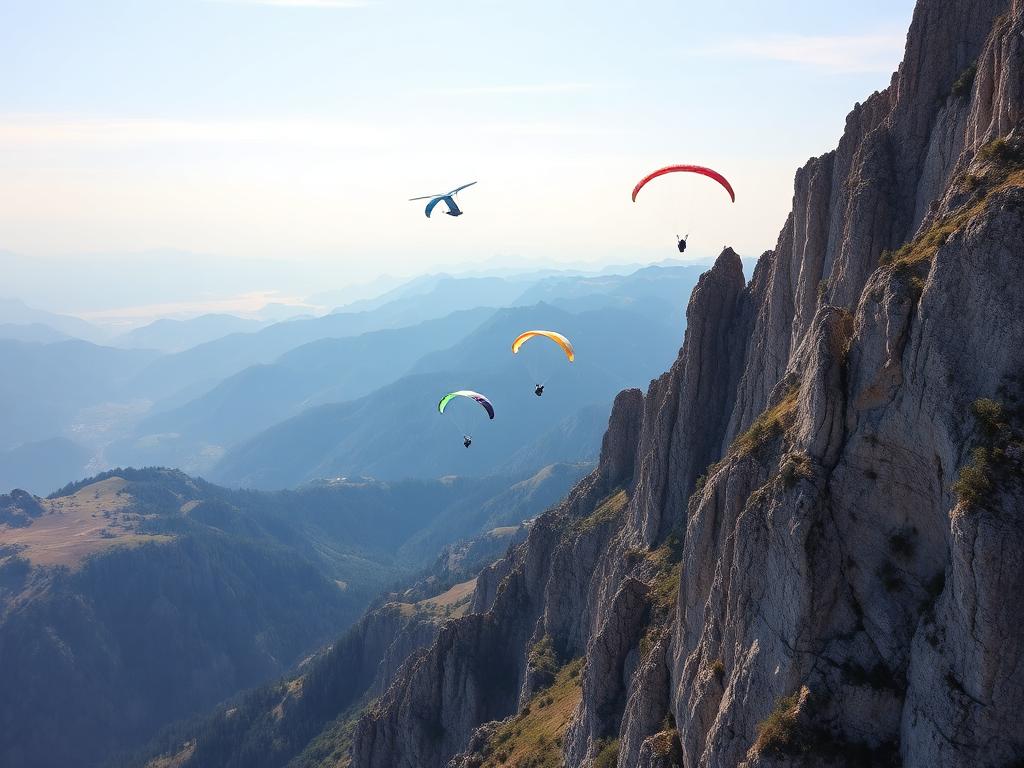Master ridge soaring with these 20 essential techniques used by expert pilots to maximize safety and performance.
Ridge soaring is often a pilot's first introduction to sustained flight, but mastering it requires understanding numerous techniques and safety considerations. Here are 20 essential skills every ridge pilot should develop.
Launch and Initial Positioning (1-5)
- Clean launch execution: Ensure your wing comes up straight and centered before committing to launch
- Immediate turn setup: Plan your first turn before launching to avoid flying into the ridge
- Wingtip awareness: Always know where your wingtips are relative to the ridge and other pilots
- Initial height gain: Focus on gaining height before attempting extended ridge runs
- Traffic pattern entry: Enter the ridge flying pattern correctly, following local rules and conventions
Basic Ridge Flying (6-10)
- Hug the ridge: Stay close to the ridge to maximize lift, but maintain safe clearance
- Proper turn technique: Use coordinated turns with appropriate banking and speed control
- Wind gradient awareness: Understand how wind speed changes with height above the ridge
- Lift band recognition: Learn to identify and stay in the band of strongest lift
- Speed control: Adjust your speed for optimal lift efficiency and penetration
Advanced Maneuvering (11-15)
- Gap crossing: Safely cross gaps between ridge sections using proper technique and timing
- Distance flying: Use ridge lift to cover long distances while maintaining safe altitude
- Convergence flying: Understand and utilize convergence zones for enhanced lift
- Top landing: Master the challenging skill of landing back on top of the ridge
- Booming: Use speed flying techniques to maximize ground speed in strong winds
Safety and Traffic Management (16-20)
- Right-of-way rules: Understand and follow ridge soaring traffic rules religiously
- Emergency procedures: Know how to safely exit the ridge area in emergency situations
- Weather assessment: Continuously assess changing conditions and know when to land
- Rotor avoidance: Recognize and avoid dangerous rotor areas behind ridges
- Night flying preparation: Understand the special considerations for late-day ridge soaring
Ridge Rules and Etiquette
Ridge flying involves multiple pilots in close proximity, making traffic rules essential for safety. Always follow local rules, maintain proper spacing, and communicate with other pilots. Give way to pilots lower than you, and never overtake on the ridge side.
Weather Considerations
Ridge lift strength varies with wind speed and direction. Optimal conditions typically occur with winds perpendicular to the ridge. Be aware of wind gradient effects - wind speed typically increases with height, affecting your control inputs.
Equipment Considerations
Ridge flying puts different demands on your equipment than thermal flying. Ensure your wing is appropriate for the expected wind conditions, and consider using a wing with good penetration capabilities for strong wind days.
Practice these techniques progressively, starting with gentle ridges in light winds before advancing to more challenging conditions. Ridge soaring mastery comes with time and experience, but these fundamentals will accelerate your progress safely.

